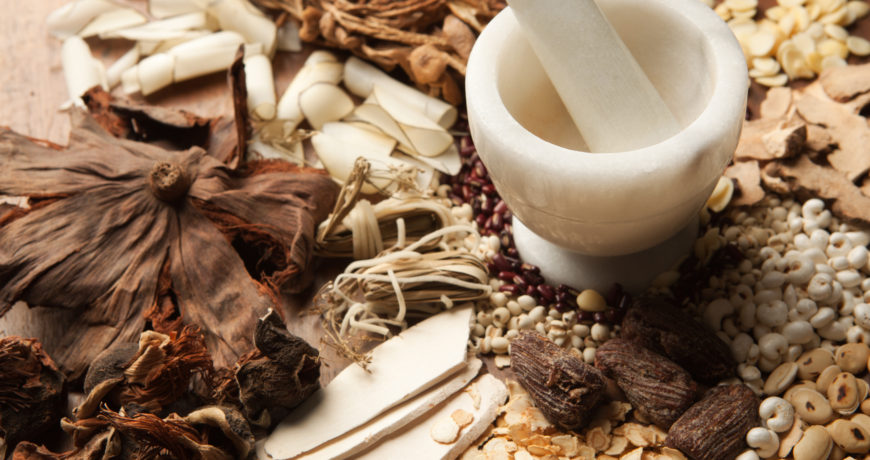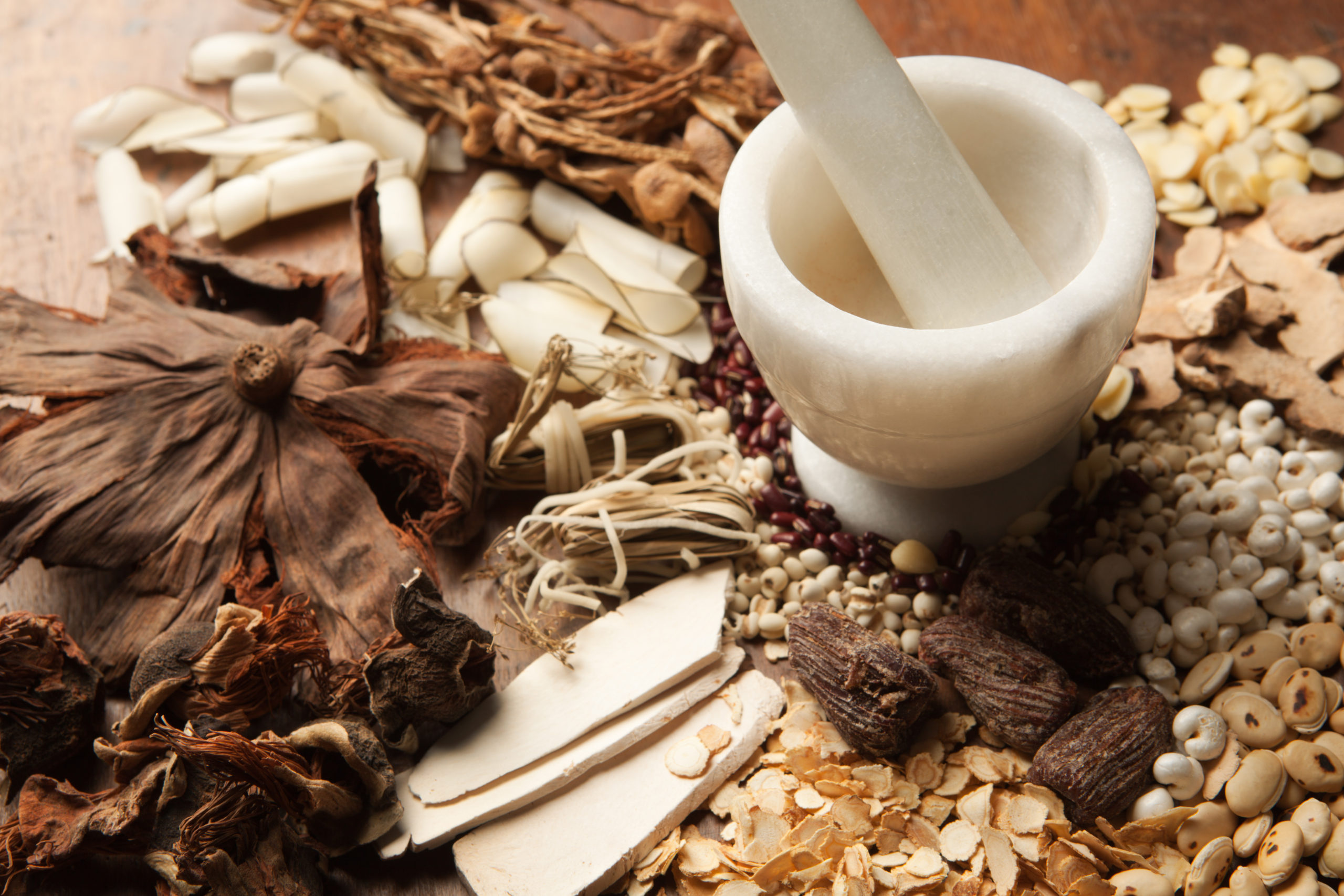Research Supports Anti-Aging Benefits of Traditional Tonic Herbs Leave a comment
According to Traditional Chinese Medicine (TCM) theory, there are three categories of tonic herbs. Each category represents one of the three key energies of the body. These energy categories are referred to as Three Treasures: Jing (Essence), Qi (Energy Flow) and Shen (Spirit). Tango formulas are based primarily on Jing or Essence Tonics, which are commonly used to prolong the years of life without aging, and are often referred to as the “antiaging” herbals.
Research on Tonic Herbs Traditional Chinese Medicine has an extensive history-going back some five thousand years-of using tonic herbs to support health and extend lifespan. Not surprisingly, research into the physiological actions of tonic herbs has exploded in the last 20 years. The following is a brief review of recently published papers on three tonic ‘superstars’ found in several Tango formulas-Astragalus, Notoginseng, and Cordyceps.
Astragalus
Astragalus has been used in Traditional Chinese Medicine for thousands of years, often in combination with other herbs, to tone and strengthen the body. Modern research shows that Astragalus slows formation of advanced glycation end products (AGEs) 1 and supports learning and memory.2 Additionally, astragulus has been shown to aid in restoring insulin receptor sensitivity in skeletal muscle.3 In one recent study researchers demonstrated that administration of astragaloside IV, a major active constituent of Astragalus, significantly improved glucose tolerance and endothelium-dependent vasorelaxation (EDVR), resulting in reduced blood pressure and triglyceride levels in fructose-fed rats. These findings support the traditional use of Astragalus for the prevention of hypertension and endothelial dysfunction related to dietary-induced metabolic syndrome.4
Astragalus is also the primary active ingredient in traditional Chinese formulas for cardiovascular support.
This benefit is supported by a recent study that found Astragalus is especially effective at protecting the aorta from damaging effects of high levels of free fatty acids (FFA).5 In a related study, scientists in Shanghai have shown that Astragalus inhibits cardiac fibrosis (stiffening of the heart muscle) while protecting heart tissues from the damaging effects of ischemia (restriction of blood flow) following a heart attack.6 Astragalus has also been shown be a potent immuno-supportive agent, capable of stimulating immune cell activation and modulating inflammatory responses, resulting in enhanced wound healing, growth of new blood vessels (angiogenesis) and normalization of blood pressure.7
Perhaps the most exciting benefit of Astragalus is its ability to boost production of telomerase, the enzyme that controls short bits of DNA, known as telomeres that play a key role in cell replication, cancer and human aging. In 2008 researchers from UCLA described how a compound derived from Astragalus, called cycloastragenol, prevented the progressive loss of telomeres in key immune cells, inhibiting the aging process of the cells and enhancing their response to fight off viral infections.8
In 2011 Spanish researchers identified another compound in Astragalus, dubbed TA-65, that also activates telomerase.
In their study the researchers noted that TA- 65 significantly increased average telomere length in treated mice, leading to improvements in glucose tolerance, osteoporosis and skin fitness.9
Notoginseng
Notoginseng (also called Panax Notoginseng and Tienchi Ginseng) is commonly used in Eastern countries for cardiovascular health. Panax Notoginseng is rich in ginsenosides the main active ingredients of all ginseng types and exhibits many of the adaptogenic properties of its related species. Panax Notoginseng Saponins (PNS), the major ingredients, have recently been shown to improve blood vessel health and to support healthy cholesterol levels.10 In related research, Notoginseng has also been shown to support healthy blood vessels by reducing inflammation and by normalizing elevated blood lipids.11
Notoginseng has been shown to be clinically effective for improving vascular reactions, supporting its use in treating hypertension and myocardial ischemia.12
Researchers from the Institute of Molecular Medicine in Beijing recently identified two active components of Notoginseng-ginsenosides Rb1 and Rg1 -that support healthy blood pressure levels by aiding L-arginine transport within endothelial cells and elevating NO (nitric oxide) to increase blood vessel dilatation.12 In another study, researchers recently demonstrated that Notoginseng fractions can aid in preventing hardening of the arteries (atherosclerosis) by reducing arterial inflammation and subsequent formation of atheromas (plaques) in arteries.13
Cordyceps Sinensis
Cordyceps sinensis is a powerful, all-purpose tonic herb that has been used in Traditional Chinese Medicine for thousands of years to promote health and longevity, restore energy and enhance athletic endurance, especially at high altitudes. This is fitting, given that natural Cordyceps is only found at extremely high altitudes in the Himalayan Plateaus. Harvesting in such extreme conditions has made this exotic medicinal one of the most highly valued of all traditional crops. Even today, high quality, naturally harvested Tibetan Cordyceps can cost over $8,000 per pound.
Despite the expense, the adaptogenic and medicinal benefits of Cordyceps made it one of the most highly prized staples of Tibetan, Chinese and traditional herbal medicines, which was often reserved for the elderly as a rejuvenating agent to fight fatigue and prevent aging. The introduction of modern cultivation techniques twenty years ago allowed for production of Cordyceps at reasonable prices, and virtually all scientific research conducted today is with extracts of cultivated Cordyceps.
Early research revealed that Cordyceps exerts powerful antioxidant properties that contribute to its wide range of antiaging and adaptogenic health benefits.14,15
In one study Cordyceps was shown to fight fatigue, enhance performance and promote lung health by enhancing production of mitochondrial adenosine triphosphate (ATP), the universal energy molecule.16
These findings are supported by research published in 2011 that describes how Cordyceps fights fatigue and enhances athletic ability. Researchers found that groups of exercising and nonexercising rats both benefited equally when given Cordyceps. Cordyceps was shown to work by activating skeletal muscle metabolic regulators, acting as a potent natural exercise mimetic.17 Cordyceps’ antioxidant properties have also been shown to improve serum lipid profiles by reducing serum total cholesterol (TC), increasing high-density lipoprotein (HDL), and lowering LDL (low density lipoprotein) and VLDL (very lowdensity lipoprotein) levels.18 Additional animal studies have shown that Cordyceps also inhibits oxidation of low-density lipoprotein by free radicals to prevent the formation and accumulation of cholesterol deposits in the aorta.19
In a related study in 2011, researchers in China demonstrated that the antioxidant properties of an extract of Cordyceps enhanced immune activity to protect mice exposed to ionizing radiation by reducing oxidative injury and modulating the secretion of cytokines IL-4, IL-5 and IL-17.20 One of the most important adaptogenic properties of Cordyceps is its ability to aid in reversing insulin resistance. Insulin resistance is a condition that severely impairs the body’s ability to absorb glucose, resulting in dangerously high glucose and insulin blood levels, and contributing to obesity and diabetes.
In 2002, researchers discovered that Cordyceps extracts restored insulin sensitivity in both healthy and diabetic animals after only 17 days of treatment. The researchers reported significant improvements in fasting blood glucose levels, fasting plasma insulin levels, glucose insulin index and oral glucose tolerance in treated animals.21
In a related study in 2006, researchers demonstrated that animals treated with Cordyceps for as little as 10 days had significant improvements in whole-body glucose disposal, accompanied by a reduction in insulin secretion after eating meals high in carbohydrates.22
That same year researchers at the Institute of Chinese Medical Sciences in Macau found that Cordyceps extracts significantly reduced blood glucose levels in diabetic mice. Serum insulin levels were also normalized, indicating that Cordyceps was stimulating pancreatic release of insulin while reducing insulin resistance.23 In a related study, scientists revealed that Cordyceps can exert significant reductions in blood glucose concentrations in diabetic rats, further supporting its potential role as a functional food for metabolic disorders and for people at risk of becoming obese and developing diabetes.24
The most recent study on Cordyceps, published in March 2012, measured the antidiabetic effects of Cordyceps and taurine as compared to glibenclamide, an antidiabetic drug in a class of medications known as sulfonylureas. Oral administration of Cordyceps was shown to decrease serum glucose, fructosamine, total cholesterol, triglyceride levels, insulin resistance index and pancreatic malondialdehyde content. Cordyceps also significantly increased serum insulin, HDL-cholesterol, total antioxidant capacity, β cell function, and pancreatic reduced glutathione (GSH) content. In their conclusion the researchers reported that while Cordyceps demonstrates less potent hypoglycemic effects than glibenclamide, it is superior at reducing insulin resistance and exhibits stronger antioxidant properties.25
Summary
While the three “tonic herbs” reviewed here represent a small fraction of the many “elite” herbs that have passed the tests of time, they do serve as excellent examples of how nature can provide safe, effective methods of improving health and quality of life.


